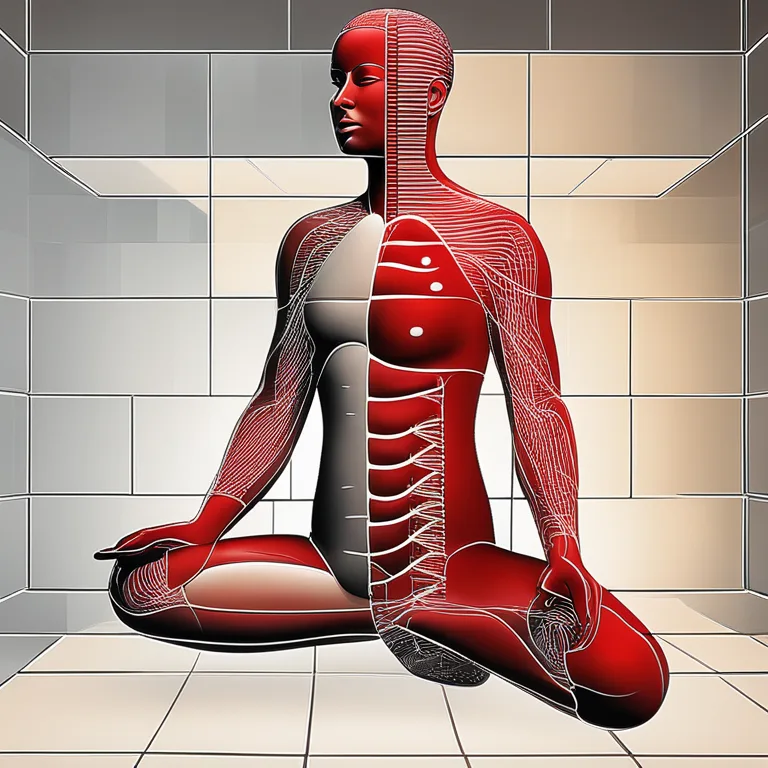
Meditative Practices for Healthy BP Levels
Explore effective meditation techniques that can help in maintaining normal blood pressure for a healthier life.
article by Hina Kurosawa
Introduction to Meditation and BP
Meditation has been practiced for centuries as a means to achieve mental clarity and calmness. What's less often talked about is its potential in managing physiological aspects, such as blood pressure (BP). Hypertension, commonly known as high blood pressure, is a significant health concern worldwide. The sedentary lifestyle, stress, and dietary choices of contemporary life can contribute to this condition. However, meditation offers a non-pharmaceutical way to combat these factors and encourage a relaxed state of being, which may help lower blood pressure.

Understanding the BP-Meditation Link
The connection between meditation and blood pressure regulation lies primarily within the stress response. Chronic stress can lead to high blood pressure by causing the body to consistently produce stress hormones like adrenaline and cortisol. These hormones can raise heart rate and constrict blood vessels, thereby elevating BP. Meditation helps mitigate this stress response, promoting relaxation and cardiovascular health. By calming the mind and body, meditation can enable the nervous system to shift from a state of alarm to one of tranquility, which can, in turn, support healthy blood pressure levels.

Mindfulness Meditation for BP Control
Mindfulness meditation involves focusing on the present moment without judgment. To harness this technique for BP reduction, find a quiet space and sit comfortably. Close your eyes and pay attention to your breath, noticing the sensation of the air flowing in and out of your body. When thoughts arise, acknowledge them without attachment and return your focus to your breathing. This practice, over time, may contribute to lower stress and reduced blood pressure by instilling a sense of peace and stillness within the practitioner.

Guided Imagery to Relieve Hypertension
Guided imagery is another meditative technique that can be particularly effective for reducing blood pressure. This technique involves visualizing calming and peaceful images or scenarios. Through guided sessions – either in a group or with the help of recordings – individuals are led through a mental journey to conjure serene settings. This method helps the body enter a relaxed state, which may positively influence blood pressure. It's often said that the body follows the mind, and by conjuring images of tranquility, the physiological response mirrors this serenity.

Yoga Nidra: Deep Relaxation for BP Management
Yoga Nidra, or yogic sleep, is a form of deep relaxation meditation. It encourages a state between wakefulness and sleep, tapping into the body's natural healing capacity. By lying down comfortably, closing the eyes, and following a guide’s instructions, participants systematically relax each part of the body. This practice deeply calms the nervous system, potentially easing high blood pressure. Yoga Nidra is especially beneficial for those who may find seated meditation challenging, as it can be performed while lying down.
Transcendental Meditation for Heart Health
Transcendental Meditation (TM) is a simple yet profound technique that involves the silent repetition of a mantra, allowing the individual to settle into a state of deep rest. Studies have shown that TM can significantly lower blood pressure, possibly by activating the body's parasympathetic nervous system, which slows the heart rate and relaxes muscles. It usually requires training under a certified TM teacher, but once learned, it can be an invaluable tool in the management of blood pressure.
Qigong and Tai Chi: Movement-Based Meditation
Qigong and Tai Chi are ancient Chinese practices combining movement, breathing, and meditation. Both are gentle and can be adapted to any fitness level, making them accessible for most people. These practices emphasize slow, flowing movements that promote relaxation and mindfulness. When incorporated into a regular routine, Qigong and Tai Chi have been shown to help decrease blood pressure, thus fostering overall cardiovascular health.
Implementing a Regular Meditation Routine
Consistency is vital when using meditation as a tool to lower blood pressure. Aim to incorporate 10 to 20 minutes of meditation into your daily routine. Remember that while meditation can be a powerful adjunct therapy, it's essential to follow your healthcare provider's advice regarding medication, diet, and exercise. Integrating meditation into a comprehensive health plan could maximize its benefits and promote sustained well-being.
Published: 12/20/2023
Modified: 12/20/2023
More predictions
Come back here soon to learn more about yourself and your future


Innovative Meditation Techniques
Discover modern meditation practices that harmonize mind, body, and spirit in our fast-paced world.


Karate Meditation: Serenity in Motion
Discover the inner peace and focus found through karate meditation practices, integrating martial arts and mindfulness.


The Many Paths of Meditation
Discover the vast array of meditation techniques enriching diverse practices worldwide.